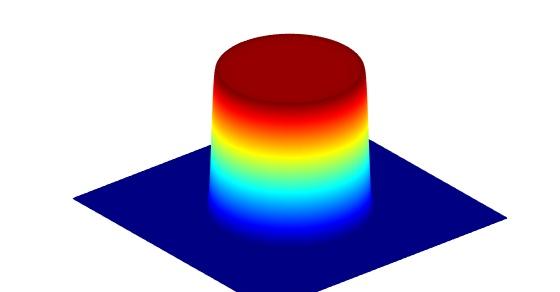Flat Top Laser Beam Shapers
Flat Top laser beam shapers are diffractive optical elements that help shape an incident laser beam to obtain a unique beam pattern of uniform irradiance level and sharp edges. Before we deep-dive into Flat Top laser beam shapers, we need to understand some basics of laser systems. The angular pattern of most laser beams follows the Gaussian distribution pattern. The irradiance profile of a Gaussian distribution pattern has a smooth peak at the center and the value decays gradually towards the edges. Therefore, this beam profile shows indefinite expansion, and theoretically, the irradiance value never reaches zero. This phenomenon results in a substantial amount of energy wastage.
Unfortunately, many medical and industrial applications require a laser system where the loss of energy is minimal and the processed area is well defined. Flat Top laser beam shapers address this issue and help get rid of the limitations of the Gaussian beam profiles by shaping the input beam. These beam shapers convert a Gaussian laser beam into a Flat Top laser beam that displays a unique beam profile of irradiance uniformity and sharp edges.
The Role of Diffractive Optical Elements in Beam Shaping
There are two main categories of Flat Top laser beam shapers, such as analytical beam shapers and diffuser beam shapers, both of which can be refractive or diffractive. Diffractive optical elements or DOEs are l beam shapers that operate by changing the wavefront of laser beams going through a single element.
To execute complex beam shaping on single mode coherent laser beams one can suitably design the structure of DOEs as analytical beam shapers. These optical elements are useful to bring an accurate phase alteration to the laser beams. This phase alteration results in a smooth and uniform flat-top irradiance profile at the center with the progression of the beam. However, one can also customize the beam profile’s shape in various geometrical shapes depending on the requirements, such as line, rectangular, square, or circle.
The main advantage of applying analytical beam shapers is their outstanding performance working on coherent laser beams. For instance, diffractive optical elements are efficient in shaping TEM00 Gaussian laser beams with very low M2 values. As the laser material processing industry requires this type of coherent input beams, diffractive optical elements have also crucial applications there. On the other hand, diffuser beam shapers are useful to work on low-coherence, multi-mode laser beams.
The Preparation for a DOE Beam Shaper
In this setup, a focusing lens takes place after the DOE and an input laser beam first passes through the DOE. As a result, the far field of the DOE is produced at the focal plane.
Applications
In industrial sectors, including microelectronics and semiconductors, Flat Top laser beam shapers have useful applications. There are also noteworthy applications of Flat Top laser beam shapers in laser material processing industries, hi-tech manufacturing, and green energy industries.
